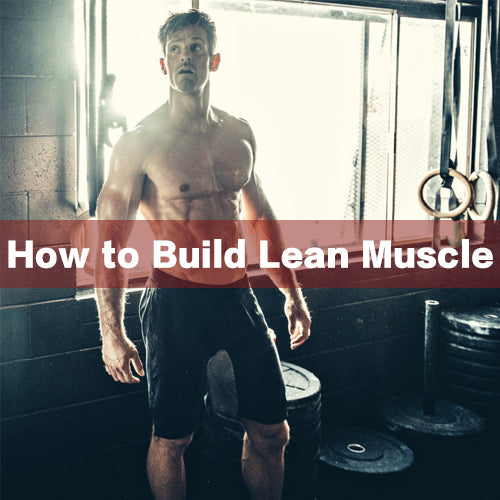The dumbbell pullover is a classic, versatile exercise. This old-school exercise has withstood the test of time precisely because it delivers immense benefits that are hard to replicate with other exercises. From enhancing overall strength to promoting unreal chest and lat development, the dumbbell pullover is an underrated gem, especially for those training at home.
If you want to build a stronger, more defined upper body, the dumbbell pullover should be a staple in your exercise regimen.
What is a Dumbbell Pullover?

The dumbbell pullover is a strength training exercise performed lying across a bench, holding a single dumbbell with both hands. The movement involves lowering the dumbbell in an arc over and beyond your head and then pulling it back up to the starting position. This exercise primarily targets the chest and back but also engages the shoulders, triceps, and core muscles.
Dumbbell Pullover Muscles Worked

Latissimus Dorsi (Lats): This is the primary muscle group worked during the dumbbell pullover. The lats are large muscles in the back that help with shoulder extension and adduction.
Pectoralis Major (Chest): The exercise also engages the chest muscles, especially the lower and middle portions, as they work to control the movement of the arms.
Teres Major: This muscle, located under the shoulder, assists in the movement of the shoulder joint and is worked during the pullover.
Triceps Brachii: The long head of the triceps is engaged to a lesser extent, helping to stabilize the arm during the exercise.
Serratus Anterior: Located on the side of the chest, this muscle is activated as it helps to stabilize the shoulder blade.
Rhomboids and Trapezius (Upper Back): These muscles assist in stabilizing the shoulder girdle and controlling the movement.
Core Muscles: The abdominals and obliques are also engaged to maintain a stable position throughout the movement.
The dumbbell pullover is unique in that it can effectively work both the back and chest muscles, depending on the technique and range of motion used.
How to Do Dumbbell Pullover?
Mastering the proper form of the dumbbell pullover is essential for reaping its benefits and avoiding injury. Here’s a step-by-step guide:
Traditional Dumbbell Pullover
- Starting Position: Lie perpendicular on a flat bench with only your upper back and shoulders supported, feet flat on the floor, and hips slightly below the bench level. Hold a dumbbell with both hands above your chest, arms slightly bent.
- Grip the Dumbbell: Form a diamond shape with your hands around the dumbbell handle, keeping your thumbs and index fingers wrapped around it securely.
- Lower the Weight: Inhale deeply and slowly lower the dumbbell in an arc over and beyond your head. Maintain a slight bend in your elbows throughout the movement.
- Feel the Stretch: Lower the weight until you feel a deep stretch in your chest and lats. Ensure your core remains engaged and your lower back does not arch excessively.
- Lift the Weight: Exhale and pull the dumbbell back to the starting position, using your chest and lats to control the movement. Squeeze your chest at the top.
- Repeat: Perform the desired number of repetitions, maintaining control and proper form throughout.
Common Mistakes to Avoid
To get the most out of your dumbbell pullovers and stay safe, avoid these common mistakes:
- Using Too Much Weight: Start with a manageable weight to perfect your form before progressing to heavier dumbbells.
- Improper Elbow Position: Keep a slight bend in your elbows to avoid placing undue stress on your joints.
- Arching the Back: Maintain a neutral spine and engaged core to prevent lower back strain.
- Incomplete Range of Motion: Lower the dumbbell fully to maximize muscle activation and flexibility benefits.
- Rushed Repetitions: Perform the exercise slowly and controlled to engage the muscles effectively.
Variations of the Dumbbell Pullover
To keep your workouts fresh and challenging, try incorporating these variations of the dumbbell pullover:
1.Straight Arm Pullover

- Lie on a flat bench, feet on the floor.
- Hold a dumbbell/barbell with both hands above your chest, arms straight with a slight bend at the elbows.
- Inhale and lower the weight behind your head in an arc, keeping arms straight.
- Lower until you feel a stretch in your chest and lats.
- Exhale and bring the weight back over your chest.
2.Floor Pullover

- Lie flat on your back on the floor, knees bent, feet flat.
- Hold a dumbbell/barbell above your chest, arms straight with a slight bend at the elbows.
- Inhale and lower the weight behind your head until it touches the floor.
- Keep arms straight with a slight bend.
- Exhale and bring the weight back over your chest.
3.EZ Bar Pullover

- Lie on a flat bench, feet on the floor.
- Hold an EZ bar with both hands above your chest, arms straight with a slight bend at the elbows.
- Inhale and lower the bar behind your head in an arc.
- Keep a slight bend in your elbows.
- Exhale and bring the bar back over your chest.
4.Bent Arm Pullover

- Lie on a flat bench, feet on the floor.
- Hold a dumbbell with both hands above your chest, elbows bent at 90 degrees
- Inhale and lower the weight behind your head while maintaining the bend in your elbows.
- Feel the stretch in your chest and lats.
- Exhale and bring the weight back over your chest.
5.Incline Dumbbell Pullover

- Lie on an incline bench, feet on the floor.
- Hold a dumbbell with both hands above your chest, arms straight with a slight bend at the elbows.
- Inhale and lower the weight behind your head in an arc.
- Keep arms straight with a slight bend.
- Exhale and bring the weight back over your chest.
Decline Dumbbell Pullover and so on, just use the decline bench
The Compelling Benefits of Dumbbell Pullovers
While the pullover may seem like a minor accessory lift, it provides a combination of benefits that make it remarkably effective for upper body hypertrophy:
Chest Stretcher
By adhering to a deep pullover stretch at the bottom of each rep, you achieve incredibly loaded lengthening of the pec fibers, a key hypertrophy trigger.
Anti-Rotation Core Strength
Maintaining a rigid, planked position throughout pullovers builds deep anti-rotational strength and stability from your shoulders to hips.
Lat Hyperextension
The top contracted position forces you to pull your lats into a maximally stretched hyperexpression, enhancing upper back development.

Serratus Activation
The protraction of the scapulae during pullovers hammers the serratus anterior muscles for improved posture and centered rib positioning.
Deadlift Carryover
Reinforcing the anti-extension strength and body tightness required during heavy deadlifts can carry over from proper pullover form.
Overhead Mobility
Including pullovers as part of your warmup primes shoulder mobility and dynamic flexibility for pressing and pulling movements.
As you can see, while targeting the lats and chest as primary movers, pullover execution also yields significant strength and stability benefits for lifters. Not to mention, they're one of the most equipment-friendly exercises around!
How to Incorporate Dumbbell Pullovers into Your Workout Routine
Integrate dumbbell pullovers into your routine to maximize their benefits. Here’s how:
- Chest Day: Add pullovers after your bench press and fly exercises to target your chest from a different angle.
- Back Day: Include pullovers to complement your rows and lat pulldowns, emphasizing your lats.
- Full-Body Workouts: Use pullovers as a compound movement to engage multiple muscle groups and save time.
FAQs
1.Proper Form and Technique
How do I perform a dumbbell pullover correctly?
Lie on a bench with your upper back and head supported, feet flat on the floor. Hold a dumbbell with both hands above your chest. With slightly bent elbows, lower the dumbbell slowly behind your head until you feel a stretch in your chest, then return to the starting position.
What are the key points to remember to avoid injury?
Keep your core engaged, maintain a slight bend in your elbows, and avoid lowering the dumbbell too far behind your head to protect your shoulders.
2.Target Muscles
Which muscles does the dumbbell pullover primarily target?
The primary muscles targeted are the latissimus dorsi (lats) and pectoralis major (chest). It also engages the triceps and serratus anterior.
Does it work the chest or the back more?
It can target both, but focusing on squeezing your chest during the movement can emphasize chest engagement, while focusing on stretching your lats can emphasize the back.
3.Breathing
When should I inhale and exhale during the exercise?
Inhale as you lower the dumbbell behind your head and exhale as you lift it back to the starting position.
4.Weight Selection
How heavy should the dumbbell be for a beginner?
Start with a lighter weight to master the form, typically between 5-15 pounds, and gradually increase as you become comfortable.
How do I know if the weight is too heavy or too light?
If you cannot control the movement or feel strain in your shoulders or back, the weight is too heavy. If you don't feel a slight challenge by the end of your set, the weight might be too light.
5.Repetitions and Sets
How many sets and reps should I do as a beginner?
Aim for 3 sets of 8-12 reps. This range helps in building strength and muscle endurance.
6.Safety Concerns
What are the common mistakes to avoid?
Avoid locking your elbows, arching your back excessively, and lowering the dumbbell too far, which can strain your shoulders.
How can I prevent strain on my shoulders or lower back?
Keep your core tight and maintain a slight bend in your elbows. Only lower the dumbbell as far as your flexibility allows without pain.
7.Variations and Modifications
Can I do this exercise if I have shoulder or back issues?
Consult with a healthcare provider or a fitness professional. They may suggest modifications or alternative exercises.
What are alternative exercises that target the same muscles?
Alternatives include straight-arm pulldowns, chest flyes, and cable pullovers.
8.Equipment and Setup
What type of bench is best for performing pullovers?
A flat bench is typically used, but a decline bench can provide a different angle of muscle engagement.
Can I do this exercise at home without a bench?
Yes, you can perform the dumbbell pullover on the floor or use a stability ball.


